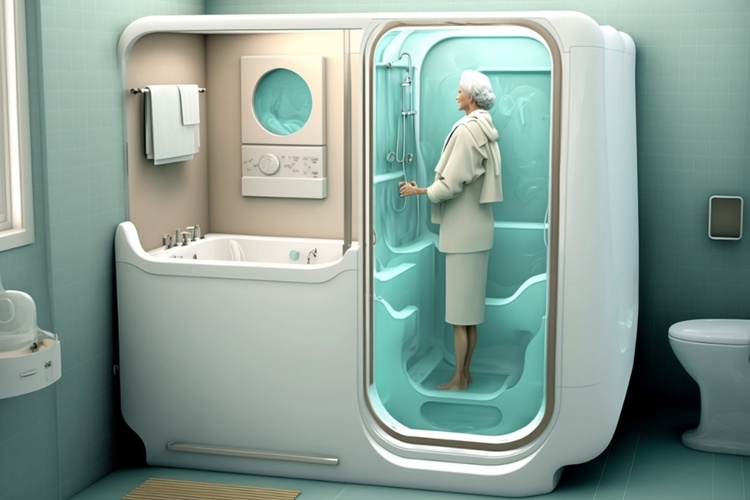Prefab Bungalows for Seniors Australia 2025: Affordable, Smart, and Modern Retirement Living
Prefab bungalows are revolutionizing retirement living for Australian seniors by providing smart, accessible, and eco-friendly housing options. This article explores how these contemporary prefab homes promote independent, comfortable lifestyles while tackling affordability and environmental challenges relevant in 2025.

Prefabricated bungalows represent a revolutionary approach to senior housing in Australia, combining modern construction techniques with thoughtful design principles. As the country’s population ages, these innovative dwellings are becoming increasingly popular among retirees who want to maintain their independence while enjoying the benefits of contemporary living solutions. The prefab construction method allows for faster build times, reduced costs, and consistent quality control compared to traditional construction methods.
Why Prefab Bungalows Are Perfect for Seniors
Seniors face unique housing challenges that prefabricated bungalows address effectively. Single-level living eliminates the safety risks associated with stairs, while open floor plans accommodate mobility aids and wheelchairs. The controlled factory environment ensures precise construction standards, reducing future maintenance issues that often burden older homeowners. Additionally, these homes can be positioned on smaller lots, making them ideal for downsizing while maintaining privacy and independence.
The construction process typically takes 8-12 weeks compared to 6-12 months for traditional builds, allowing seniors to transition into their new homes more quickly. This speed is particularly valuable for those selling family homes or moving closer to healthcare facilities and family members.
Enhancing Safety and Convenience with Smart Home Features
Modern prefab bungalows integrate smart home technology designed specifically for senior safety and convenience. Automated lighting systems reduce fall risks by eliminating the need to navigate dark spaces, while smart thermostats maintain comfortable temperatures without manual adjustment. Emergency alert systems can be seamlessly integrated into the home’s infrastructure, providing peace of mind for both residents and their families.
Voice-activated controls allow seniors with limited mobility to operate lights, locks, and appliances without physical strain. Smart doorbells with video capabilities enable residents to screen visitors safely, while automated medication reminders help maintain health routines. These features are often pre-installed during the manufacturing process, ensuring proper integration and reducing installation costs.
Energy Efficiency Benefits: Cost Savings and Environmental Impact
Prefabricated bungalows excel in energy efficiency due to precise construction tolerances and advanced insulation systems installed in controlled factory conditions. Double or triple-glazed windows, high-performance insulation, and energy-efficient appliances significantly reduce utility costs, which is particularly important for seniors on fixed incomes.
Solar panel systems can be easily integrated during the manufacturing process, providing long-term energy savings and reducing environmental impact. Many prefab homes achieve 6-7 star energy ratings, substantially lowering heating and cooling costs throughout Australia’s diverse climate zones. The improved building envelope also provides better temperature control and indoor air quality, contributing to resident health and comfort.
Customizable Designs and Community-Oriented Living
Prefab bungalows offer extensive customization options to meet individual preferences and accessibility needs. Floor plans can be modified to accommodate specific mobility requirements, while interior finishes and fixtures can be selected to match personal tastes. Many manufacturers offer universal design features as standard options, including wider doorways, accessible bathrooms, and lever-style door handles.
Community-oriented prefab developments are increasingly popular, offering shared amenities like community gardens, walking paths, and social spaces while maintaining individual home ownership. These developments often feature maintenance-free exteriors and landscaping services, allowing residents to focus on enjoying their retirement rather than property upkeep.
Cost Effectiveness Compared to Traditional Retirement Housing Options
Prefabricated bungalows offer significant cost advantages over traditional retirement housing options in Australia. The controlled manufacturing process reduces waste and labor costs, while bulk purchasing of materials by manufacturers provides additional savings.
| Housing Option | Provider/Type | Cost Estimation (AUD) |
|---|---|---|
| Prefab Bungalow (2BR) | Various Manufacturers | $180,000 - $350,000 |
| Traditional Build (2BR) | Custom Builders | $280,000 - $500,000 |
| Retirement Village Unit | Major Operators | $300,000 - $600,000 + fees |
| Aged Care Facility | Private/Government | $450,000 - $800,000 + ongoing |
| Granny Flat (Prefab) | Specialist Builders | $120,000 - $250,000 |
Prices, rates, or cost estimates mentioned in this article are based on the latest available information but may change over time. Independent research is advised before making financial decisions.
The total cost of ownership for prefab bungalows is typically 20-30% lower than traditional construction when factoring in reduced build times, energy efficiency savings, and lower maintenance requirements. Many seniors find that selling their family home provides sufficient funds to purchase a prefab bungalow outright, eliminating mortgage payments and reducing financial stress during retirement.
Prefabricated bungalows represent a practical and forward-thinking solution for Australian seniors seeking comfortable, affordable, and sustainable retirement housing. The combination of smart technology, energy efficiency, customizable design, and cost effectiveness makes these homes an increasingly attractive option for those planning their retirement years. As the industry continues to evolve, prefab bungalows are likely to play an increasingly important role in addressing Australia’s senior housing needs.




